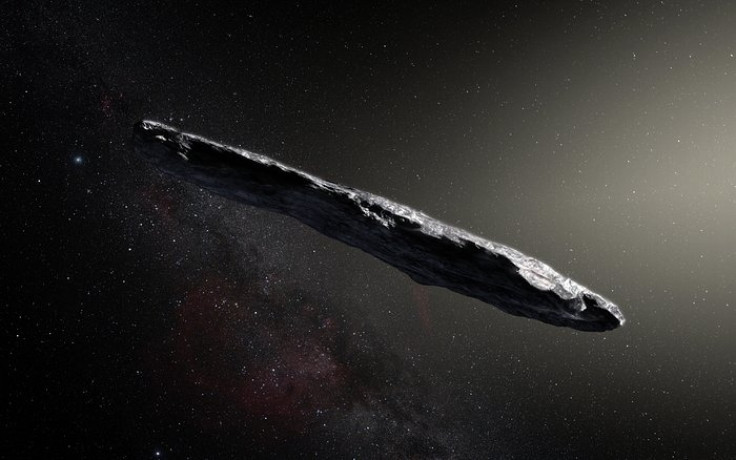Is Oumuamua an alien space probe? Astronomers to listen for signals from interstellar asteroid
The cigar-shaped asteroid has fascinated astronomers with its bizarre features since it was discovered in October.
Oumuamua, the first ever interstellar asteroid that made its way to our Solar System, has enthralled astronomers with its bizarre features and behaviour since it was first discovered in October. The cigar-shaped asteroid's rapid journey across space, its orbit and unusual structure have led alien hunters to speculate whether Oumuamua could be more than just a space rock.
Now, astronomers at the Breakthrough Listen research programme, which is funded by Russian tycoon Yuri Milner, will be checking to see if the asteroid is giving off any artificial radio signals – hinting at the possibility of the asteroid being more than just a space rock, possibly even an alien space probe.
Scientists working on deep space transportation have previously suggested that a needle or cigar shape is the most likely structure for an extraterrestrial spacecraft. This would make Oumuamua even more of an ideal candidate to be a potential alien space probe.
Natural or artificial?
Although scientists believe that the interstellar asteroid's origins may be more likely natural than artificial, researchers are yet to arrive at a consensus on its origins.
"The more I study this object, the more unusual it appears, making me wonder whether it might be an artificially made probe which was sent by an alien civilization," Avi Loeb, the chair of Harvard's astronomy department and one of Milner's advisers on Breakthrough Listen, wrote in the email to Milner, the Atlantic reported.
"Typically in astronomy we don't see things that are rare—if we see one, that means there's a lot more out there," Breakthrough Listen's lead scientist Andrew Siemion, who is also director of the Berkeley SETI Research Center, said, Scientific American reported. "So, while this is most likely a natural object, if we don't eventually see any more, that would indeed be very strange and would increase interest from a SETI perspective."
At present, the interstellar asteroid is around two astronomical units (AU) away from our Solar System, which is twice the distance between Earth and the Sun. According to the Breakthrough Listen team, at this distance, it would take the Green Bank Telescope, (which the team intends to use to listen for potential radio signals) under a minute to detect a signal coming from the interstellar asteroid.
"With our equipment at Green Bank, we can detect a signal the strength of a mobile phone coming out of this object," Milner said, Scientific American reported. "We don't want to be sensational in any way, and we are very realistic about the chances this is artificial, but because this is a unique situation we think mankind can afford 10 hours of observing time using the best equipment on the planet to check a low-probability hypothesis."
"'Oumuamua's presence within our solar system affords Breakthrough Listen an opportunity to reach unprecedented sensitivities to possible artificial transmitters and demonstrate our ability to track nearby, fast-moving objects," Siemion said in a statement. "Whether this object turns out to be artificial or natural, it's a great target for Listen."
The Atlantic reported that Milner is investing more than $100m over a 10-year period to develop a spacecraft capable of shooting a tiny probe toward Alpha Centauri, Earth's closest star system neighbour. If the project succeeds, the space probe, travelling at one-fifth the speed of light, could cut the travel time of the 25-million-mile destination from tens of thousands of years to a mere 20 years.







